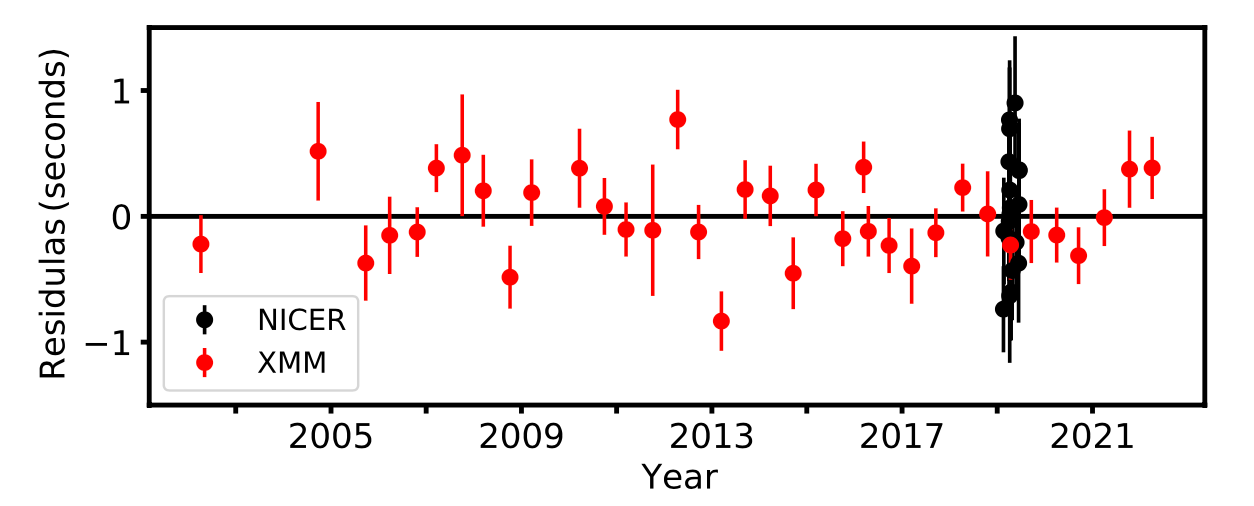NICER / ISS Science Nugget
for September 29, 2022
The long-term slowdown of a nearby celestial clock
In collaboration with ESA's X-ray Multi-Mirror (XMM) Newton telescope, NICER observations of the neutron star known as RX J1856.5-3754 have enabled a definitive measurement of this pulsar's spin rate and its evolution over two decades. One of the brightest (in visible/UV and X-ray light) and most nearby (approx. 400 light-years distant) neutron stars, RX J1856 has been used as a calibration target by multiple space-based telescopes; the constancy of its emission properties over the 26 years since its discovery have made it useful for tracking instrument response changes with time as well as cross-calibration between observatories. A small fraction, about 1.2%, of the X-rays emitted by RX J1856 are pulsed with the star's rotation period of 7.05 seconds, as hot-spots on its surface swing through our sightline.
Despite many "snapshot" observations over more than two decades, the long-term spin behavior of RX J1856 was poorly constrained until a dedicated set of NICER pulse-timing observations was carried out in 2019. By combining XMM-Newton and NICER data, a team led by D. De Grandis (INAF, Italy) has now been able to unambiguously measure the slowing down of RX J1856's rotation period, at 1.9 microseconds per century. This tiny value has a number of implications, including providing estimates of the neutron star's magnetic field strength, its age, and the total rotational kinetic energy that it loses over time in the form of radiated luminosity. This work was recently accepted for publication in the peer-reviewed U.K. journal Monthly Notices of the Royal Astronomical Society.

Figure:
XMM-Newton observations roughly twice each year (red points) together with a dense campaign of NICER observations in 2019 (black points) have enabled long-term monitoring of the spin rate of neutron star RX J1856.5-3754. The "residuals" plotted here refer to the difference, at each epoch, between observed pulse arrival time and that predicted by a model that includes a steady spin-down term; the clustering of points around zero residual lends confidence in a model with spin frequency 0.14173907778(8) Hz and spin-down rate 6.042(4) x 10^-16 Hz/sec, where the numbers in parentheses refer to uncertainties in the last quoted digits.
<< Previous
Main Index
Next >>